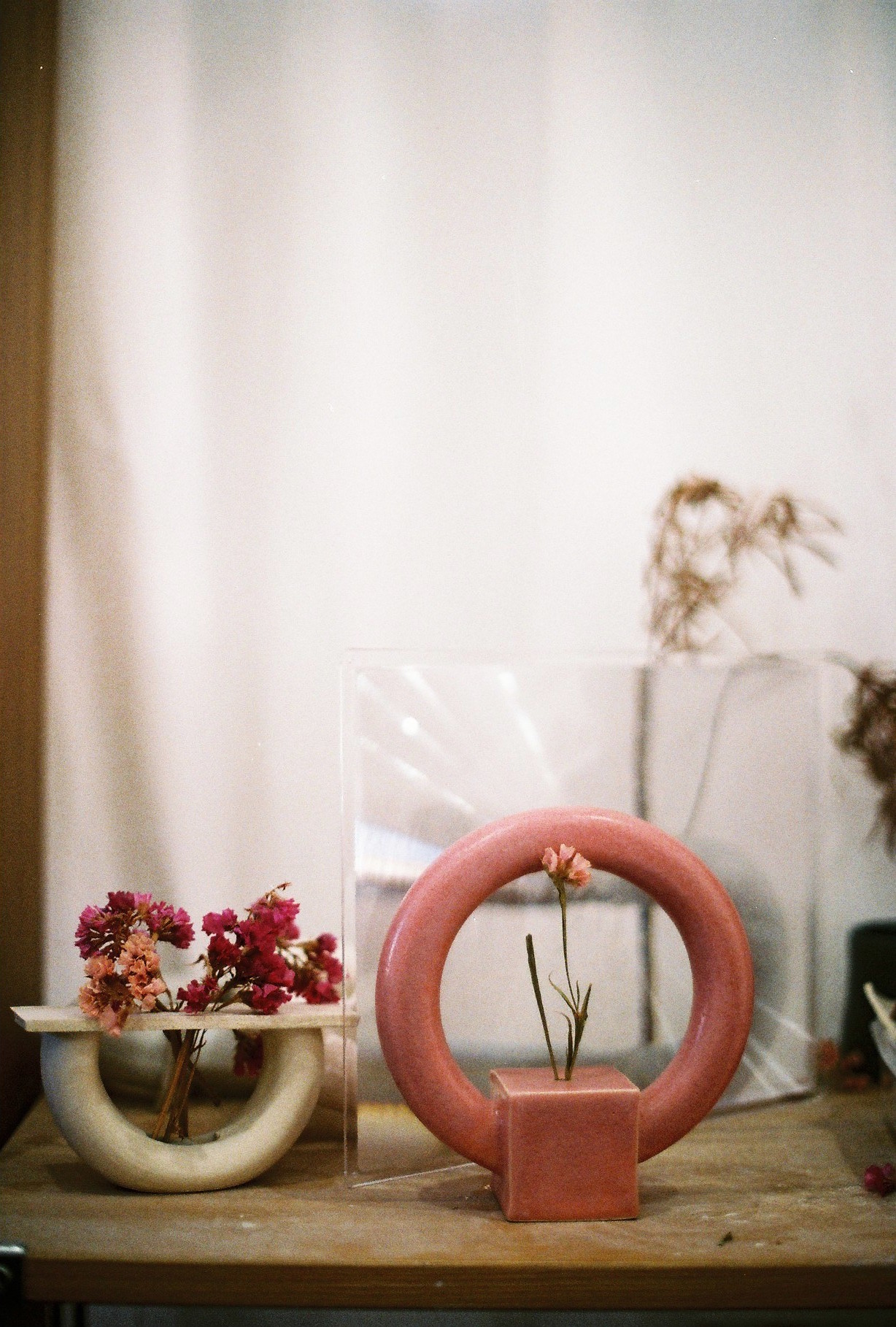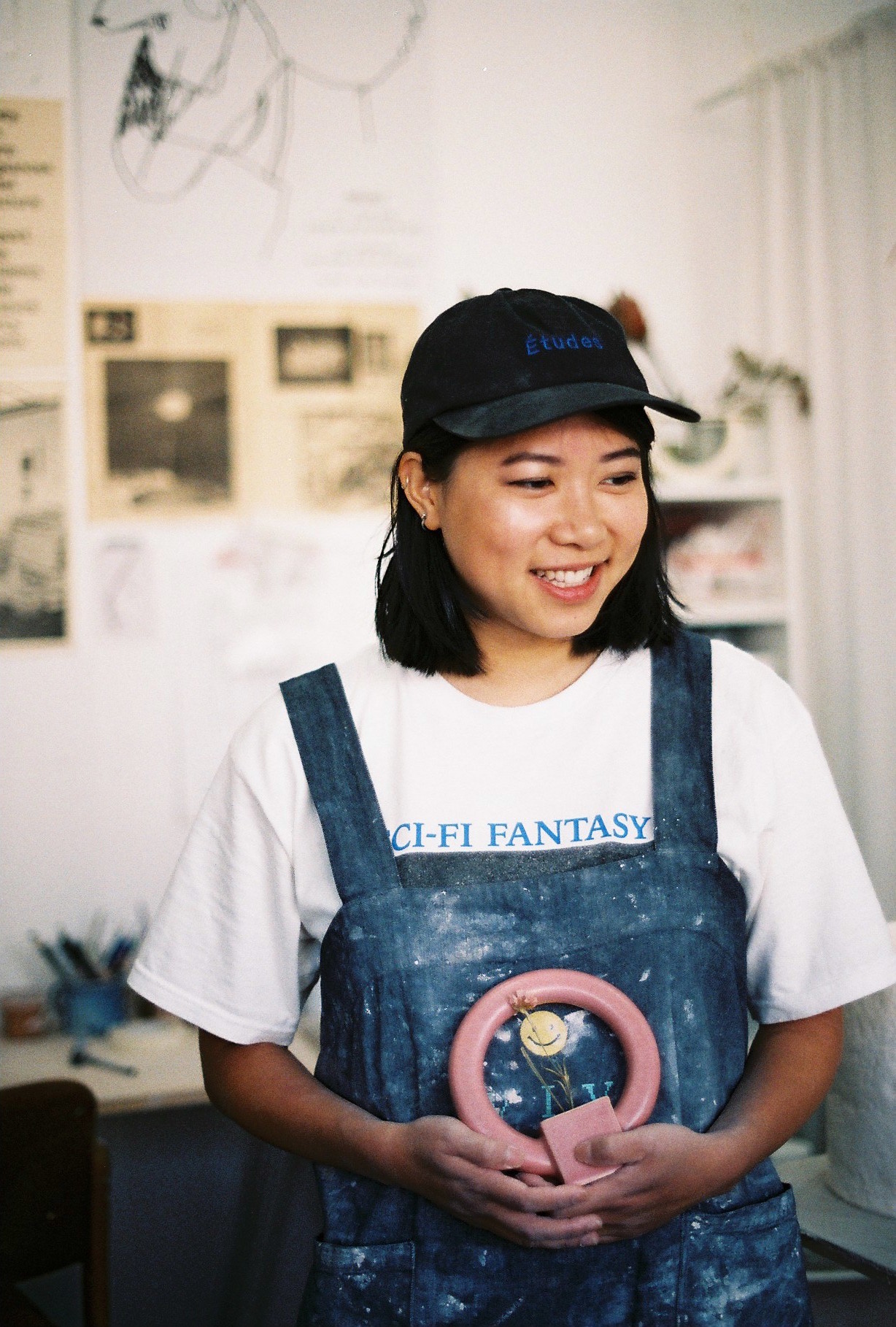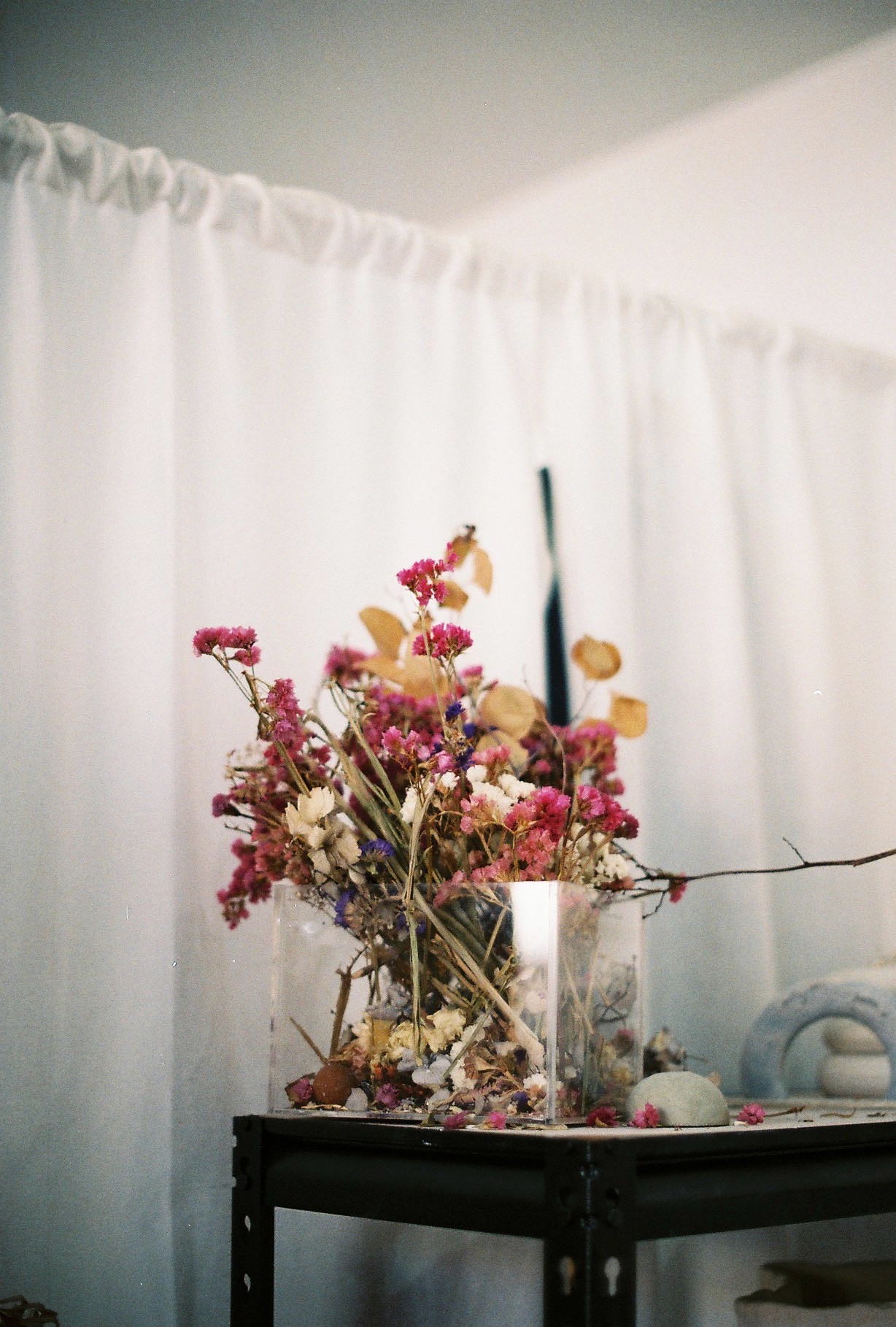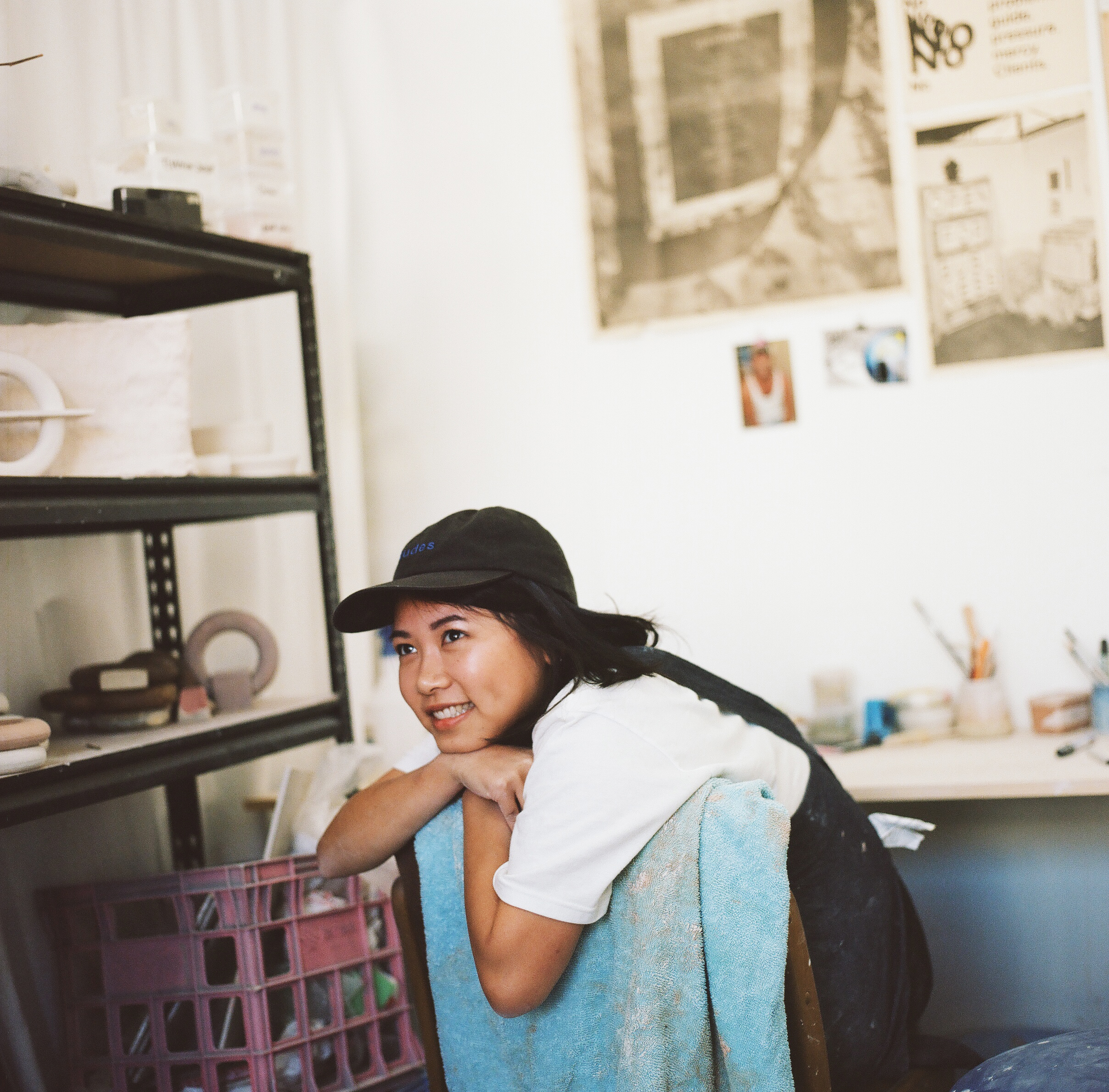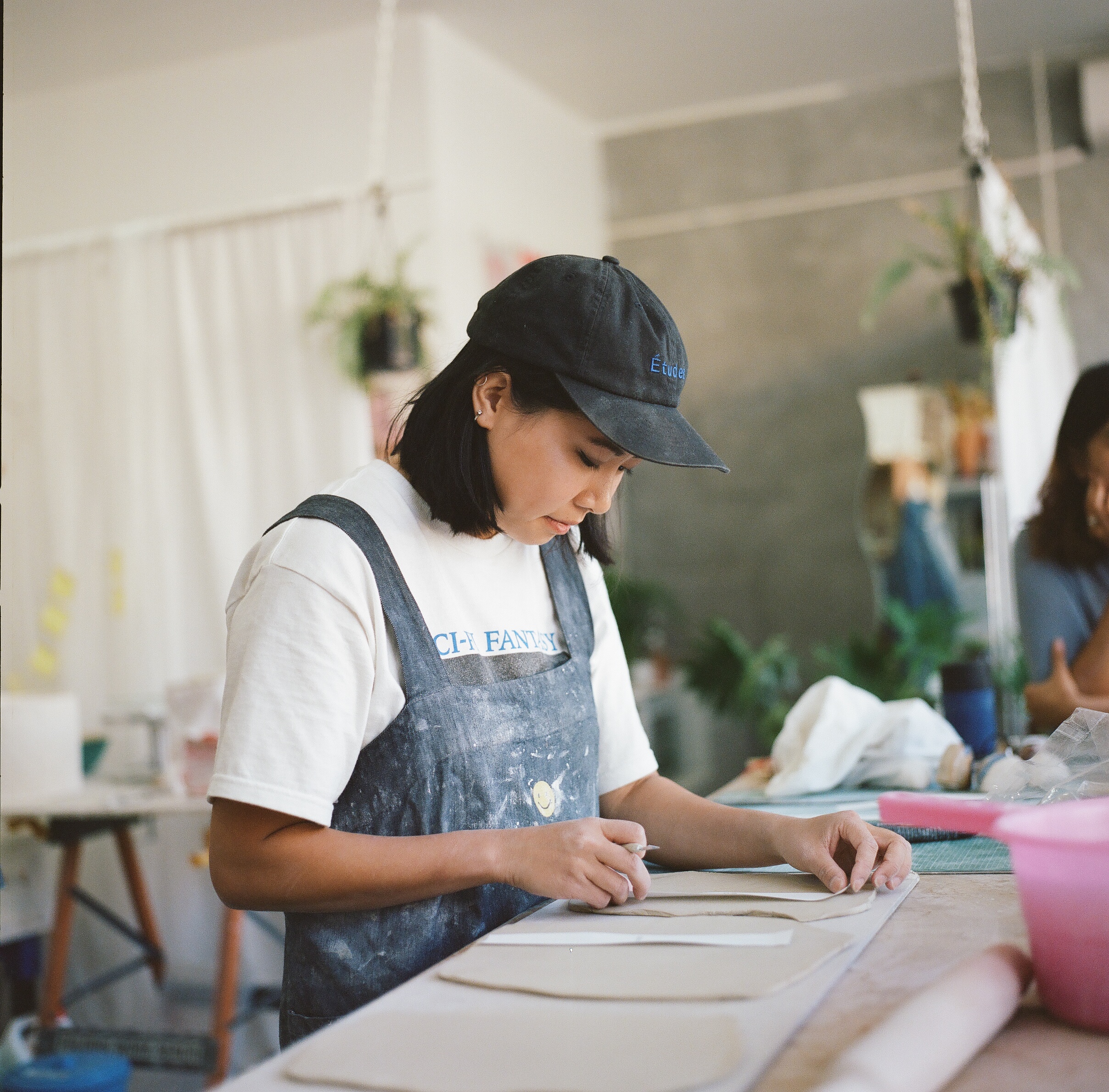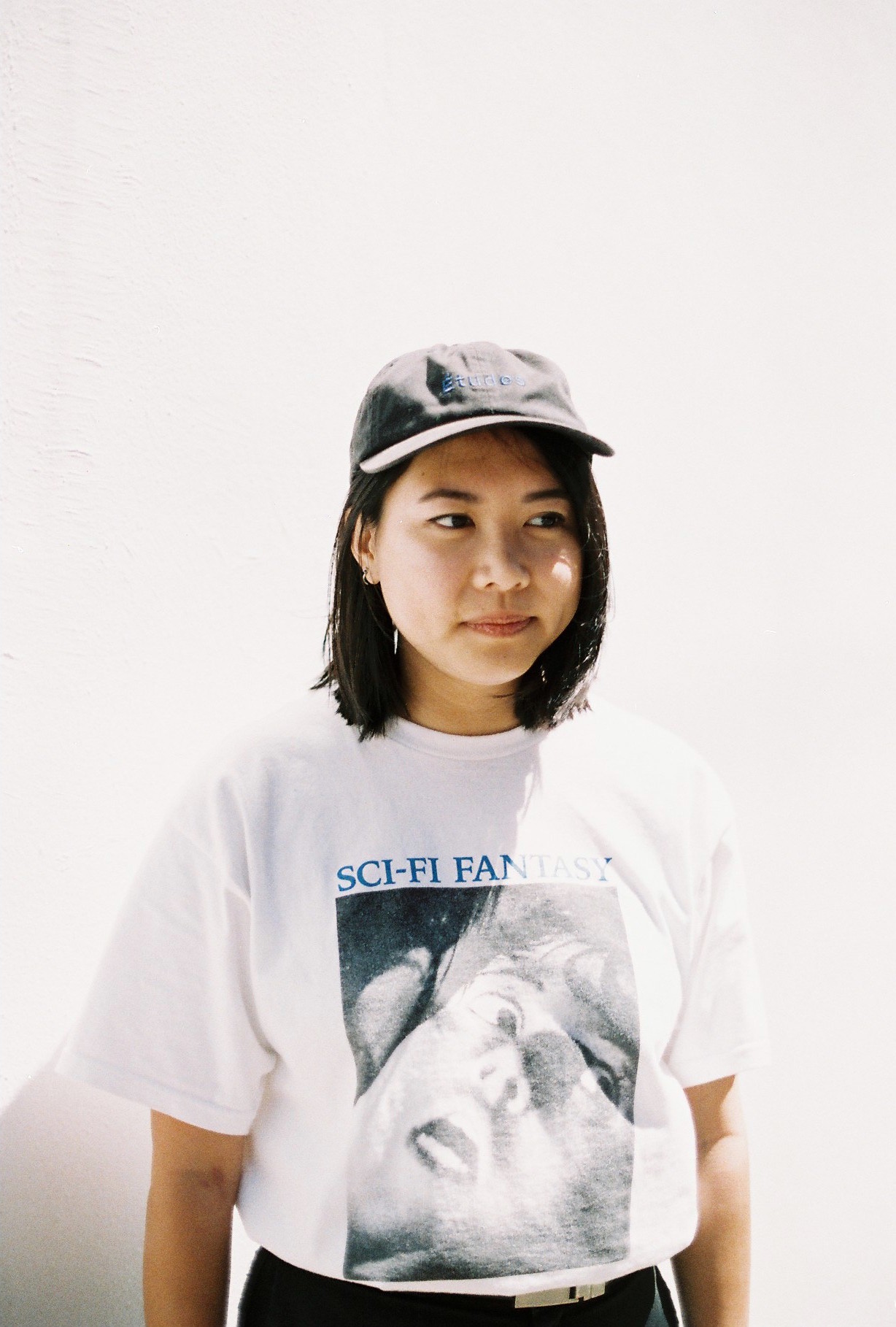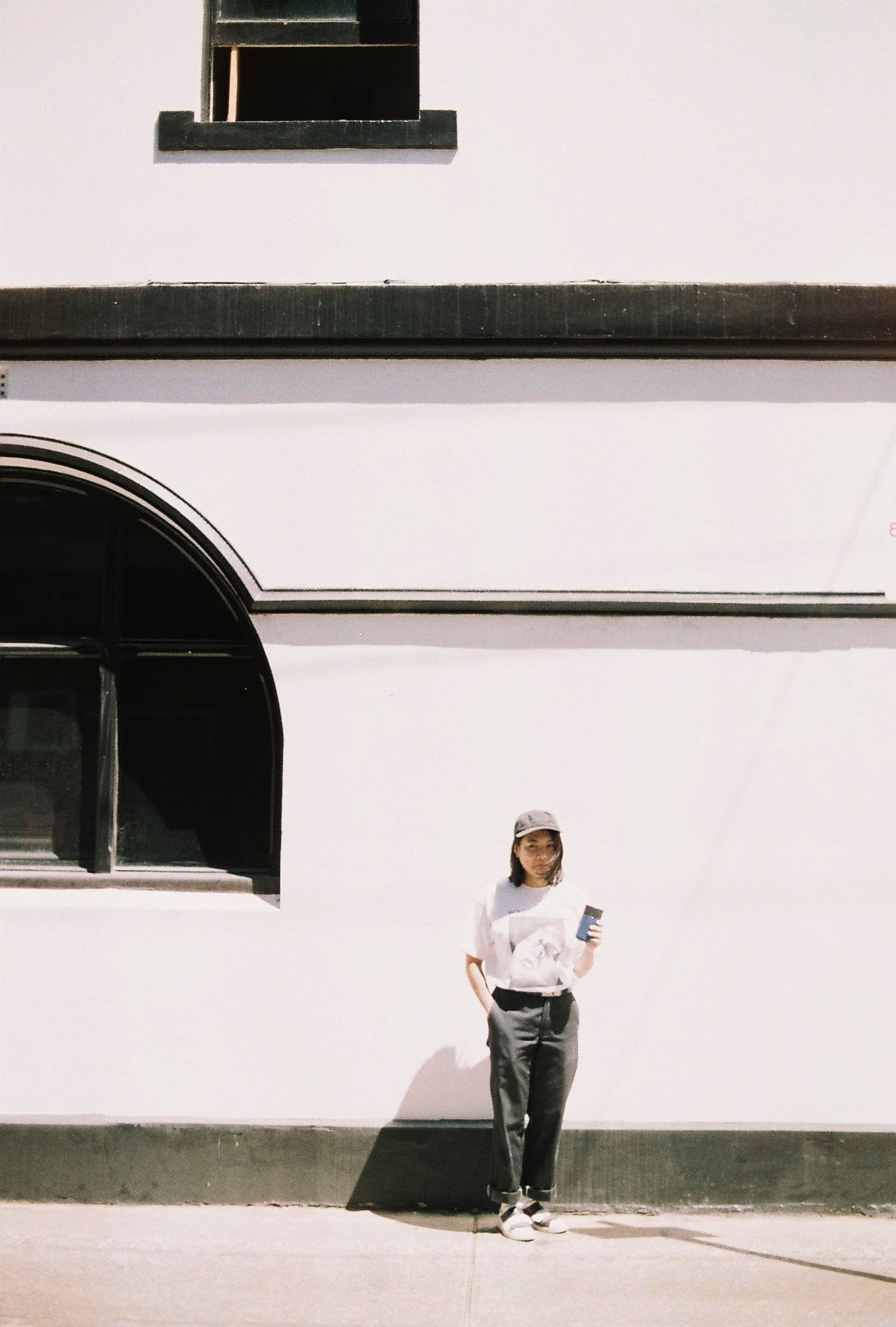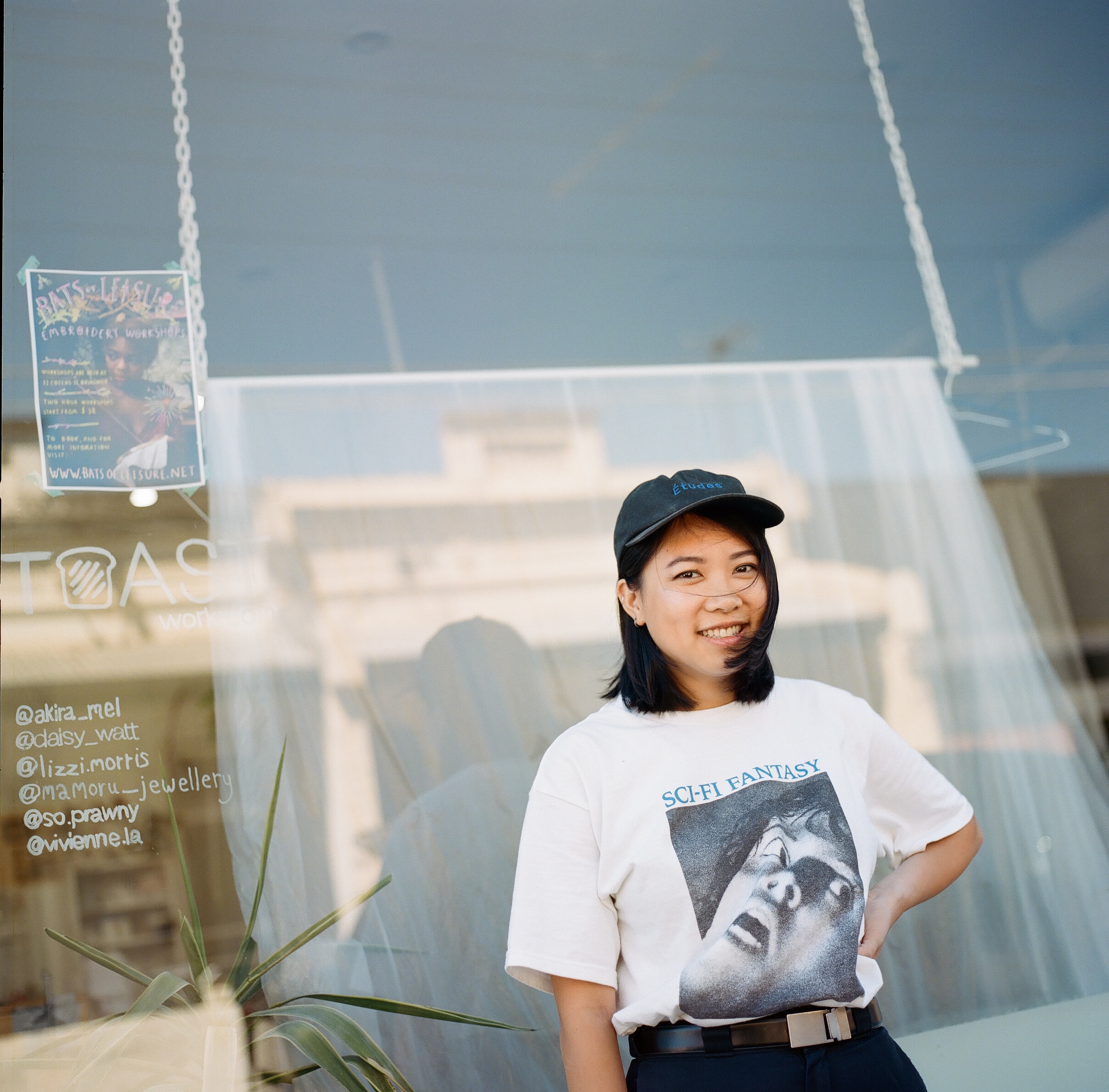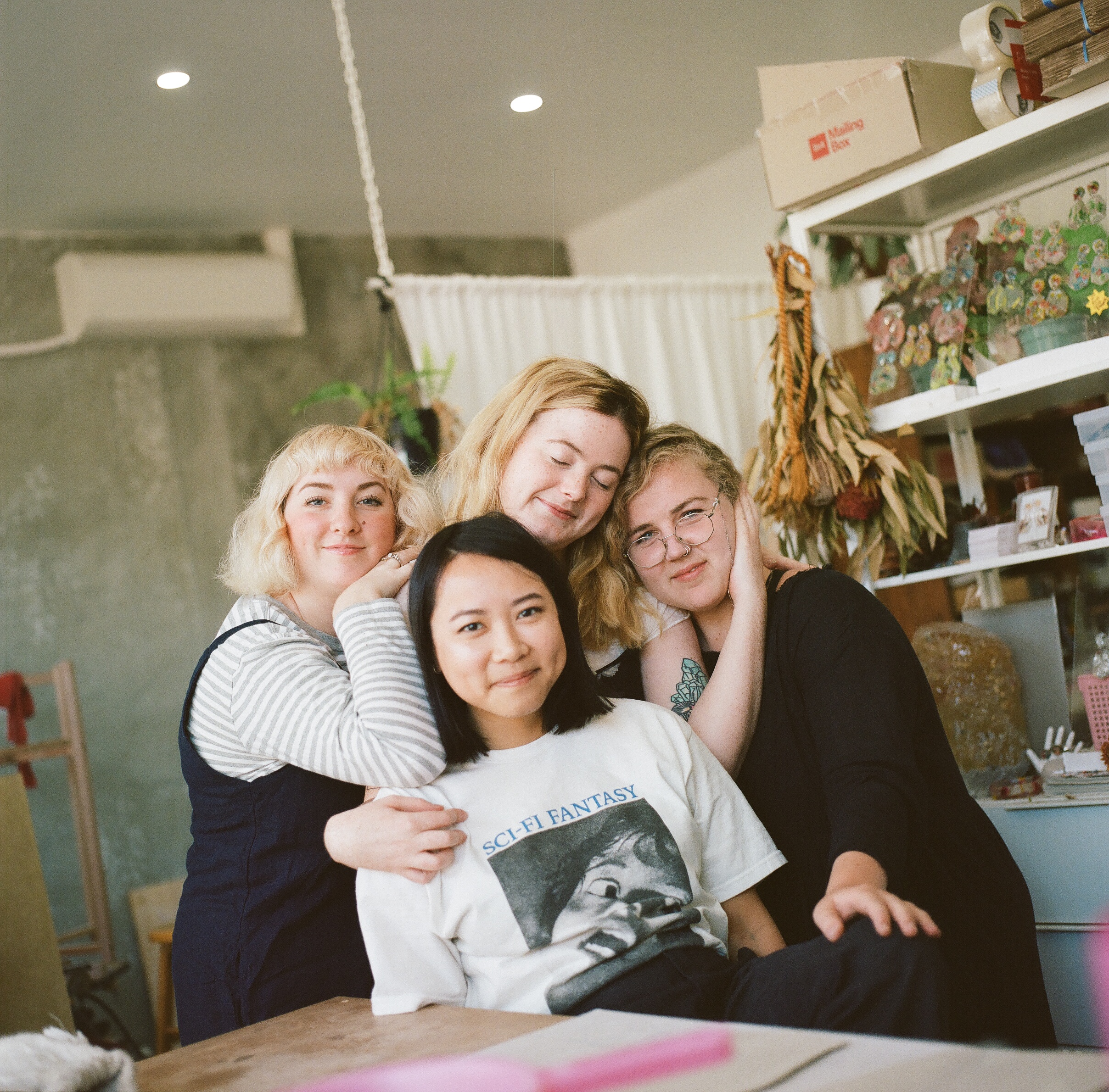Interview #47 — Vivienne La
Interview by Amie Mai
Vivienne La is a Melbourne based freelance designer and artist. Her work for content-aware explores the connections between art, design, technology and the transmission of cultural ideas. A multi-disciplinary artist, Vivienne’s projects span sculpture, jewellery, photography and zine-making.
A resident at Toast Workroom, she has exhibited her works at RVCA Gallery, Perfect Splash and Mr Kitly as well as being stocked in Modern Times and IMA Brisbane.
Vivienne La spoke to Amie Mai about being a creative with a day job, the role of the internet in art-making, and her love of snacks.
You studied interior design and were working in the industry for a couple years before creating content-aware—how have you found yourself at this point?
The course I took (Interior Design at RMIT University) fostered processes of research and critical thinking, and nurtured a very conceptual and artistic mode of practice. Entering my first job was almost the antithesis to this—where decisions were made based on aesthetics, trends, or budget. I had been very enthusiastic and driven whilst studying, but my creative disposition became stifled as I worked full time, and I felt inadequate to change my situation. I began taking weekly pottery classes to alleviate stress and anxiety, and nine months later I had quit my job and my best friend Sarah had found us a studio.
Can you describe your creative practice? How has it evolved since you started making?
At uni, we were encouraged to diversify our skill sets and were offered studios in countless fields—including furniture design, writing and publication, jewellery design and projection mapping. The teachings were conducted in a way so that we were positioning other fields of practice in relation to a central one (in this case, interior design). I began to find unexpected enjoyment in an assortment of mediums, becoming a jack of all trades and a master of none—but I found that my response to each exercise became an exquisite corpse, where I’d pool together random learnings from unrelated realms of knowledge. This made me want to share my perspective.
During my thesis year, I had been investigating the role of the image and its shift into becoming proxy for our physical surroundings. I had become fascinated with the results that would come about when using imaging technology to capture representations of our environment, and how an artificial intelligence was reading our world. I had been doing small exercises like capturing museum exhibits with 3D scanning, or animating floor plans with face morphing programs.
When I started making objects, I saw them merely as the subject matter on which these experiments could be employed. Gradually, this auxiliary part of my practice began to absorb the other, but my fascination with image and technology is always driving me to make more so that I have the opportunity to document more. I’m quite an impatient learner who lives off internet tutorials, so my approach has been a very ad hoc blend of learning.
Having been friends for three years and living with you for two, I can see a lot of you in your art. Do you perceive your own personal identity and content-aware to be separate entities?
I’m so flattered that you think so, because I don’t feel like I have a distinctive style yet! I do see them as separate entities. I don’t find my personal identity to be at the core of my work, so content-aware has been more of a robot’s log of arrangements or observations.
Your ceramic work is very modular and lend themselves to multiple uses/presentations. Can you speak a little on this aspect of your designs?
I would say that the aspect of multifunctionality might stem from the cheesy student work I was used to doing at uni—for example, furniture that doubles as storage, public interventions or pavilions that transform at night into a bar or installation… exercises in design so that what was being produced would make the most out of their existence. In addressing presentation, I’ve always been fascinated with still life, and the visual puzzle of creating balance in arrangement—why does an incremental shift within a set of objects make my brain see disharmony and imbalance?
A lot of your work is concerned with the temporality of existence and the impact of the unpredictable nature of our reality on the self.
I always come back to The Time Machine by H.G. Wells, where the protagonist uncovers a series of buildings hundreds of thousands of years in the future. They appear ancient and monumental, but the time period indicates that they are post-humanity. From their description there are symbols or shapes that are shared with the present day, but the aeons of time passed have produced seemingly alien, enigmatic structures. I think about discovering ruins in the future, overgrown with flowers, and what I would ask myself—is this the right way up? Is this the entrance or the exit? I’ve been conditioned to read and position objects or shapes in a certain way, but what if I were an alien?
Your zine, ‘Cheese Dreams’, for Perfect Splash’s show ‘Weird Snack’ describes the correlation between dream intensity and the strength and texture of various cheeses. Right down to the styling, snacks pervade your art. Where does this snack fixation come from?
I think it comes back to the conversation of having constituent interests or fascinations that contribute to forming your perspective. Food and its place in culture has always been very significant to me. From living with me you’d know that I get as much enjoyment from filming my cooking as doing the actual cooking. The first time I served my own food on a plate I had made, I felt intense excitement and happiness. It might have been the first instance of me realising that my passions didn’t have to be mutually exclusive.
As a freelance designer, how do you balance being creative in your day job and nurturing your own passions? Could you make art full time?
There’s been a fortunate amount of overlap since the design studio I work for draws a lot of inspiration from nature, sculpture and objects. Engaging with the larger scale of the built environment helps me think about how people use objects in different spaces, and it has become complementary to the way I approach the construction of my sculptural work.
At the moment I’m enjoying having more than one creative output and am learning through working in both commercial and artistic contexts. It’s been interesting to see how my design sensibilities can come to inform my artistic practices, and vice versa. I am fortunate enough to work for two women who support me and encourage me to pursue anything that piques my curiosity—but I have no desire to do one single thing and make that my entire life. I don’t ever want to put financial pressure on my art, in fear that my processes become more calculative and dependent on other people.
Do you ever experience artist's block? How do you get yourself out of a rut?
Yes, but I haven’t quite figured out a method to overcome it! In the past I’ve read books with my sketchbook close by… I find it’s helpful to transport my brain somewhere foreign.
Toast Workroom is an all-female creative studio in Brunswick. How important has that community been whilst starting out as a young artist?
At first I didn’t consider myself worthy of a space and felt as if I was imposing on ‘real’ artists. It was heartening to learn that other artists at this age shared similar insecurities, and I feel so lucky that we have been able to offer each other support as friends and as artists. Slowly I began to realise that a lot of the advice I was sharing could be applied to my own situation—that pursuing art did not have to be an elusive life choice where I either succeed or fail, but a something I practiced in parallel to all the other things that make me happy and healthy.
How do you navigate Melbourne art spaces as a woman of colour?
The Melbourne art spaces that I’ve been fortunate enough to enter have provided me with positive experiences. Being confronted with racism at a young age has caused the battles with the Asian part of my identity to overshadow those in regards to my gender. I have to acknowledge that I’ve been privileged enough to not have been burdened by my ethnicity in the art scene, and in my daily life I am surrounded by people that don’t do anything to remind me or point out that I’m different, nor am I tokenised. Thanks to a growing number of POC voices sharing their experiences and the rise of publications like Liminal, I’ve been feeling more pride and less doubt - it feels like a personal overcoming. However, there are others who aren’t living in a bubble of tolerance like myself, and more marginalised voices that need listening to. It’s important to consider that not all of them have a platform.
It feels like artists nowadays are required to use social media to promote themselves and formulate a personal brand, are you conscious of your presence on instagram?
It’s interesting how it’s become an unavoidable part of contemporary art practice and it’s definitely a skill not to be dismissed. Content aside, there are still so many other things to consider—tags, hashtags, emojis and language (on a screen and not a page)—all fairly new phenomena in the grand scheme of things, and we all started from square one. I think it’s really interesting to see how different artists engage with this stuff and how it changes as technology progresses. I’m still a bit clueless when it comes to my own, and for some reason I find it hard to share anything personal. Can being private be seen as a part of your personal brand?
What is your favourite food snack to consume while in the studio?
It’s hard to pick one, but I really like Kameda Seika Happy Turn—they’re oval shaped rice crackers that are dusted with ‘Happy Powder.’ The mascot is really cute and some packets have a heart shaped cracker hiding inside.
Do you have any advice for emerging artists?
Get yourself a space and go to work! Also, although it’s a cliché, put your happiness and enjoyment at the forefront of your practice, and let everything else come as a bonus.
Who inspires you?
Too many people to name! My best friend Darcy whose point of view and perspective I am fascinated by. He also has extreme expertise in everything I know nothing about and is very generous in sharing his knowledge. Annabelle and Alana who run Perfect Splash—what they’ve done for the creative community in celebrating emerging artists, but also geographically in Footscray is remarkable. As artists they do so many things with a purity (stylistically and socially) that I find very inspirational. Finally, Gilles Peterson.
What are you currently listening to?
SiR— November, and Kerri Chandler’s DJ Kicks compilation.
What are you currently reading?
Inverted World by Christopher Priest, a novel about an entire city moving on train tracks, which need to be picked up as they are rolled over and moved to the front again.
How do you practice self-care?
By washing my face, no matter what time I get home. By visiting my dog and cooking cute meals.
What does being Asian-Australian mean to you?
I think my parents find me quite bizarre because I’ve chosen to pursue art and design and I don’t really have a plan—but I can see that they are so proud of me because of how much happiness my choice is bringing me. Pursuing happiness instead of security—I think that’s something I’ve helped them understand. A friend recently pointed out that we are the first of three generations to not have to escape war or famine, so having gratitude for what we have is something my parents have helped me understand. I guess it means embracing and sharing my culture, being grateful, but also enjoying the life that my parents have worked so hard for me to have.
Find out more
Interview by Amie Mai
Photographs by Leah Jing McIntosh



